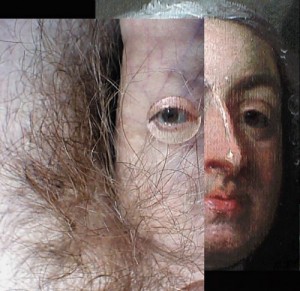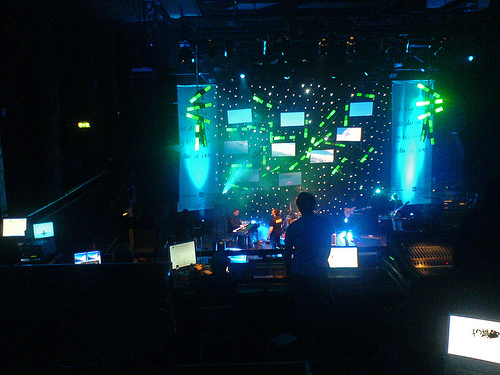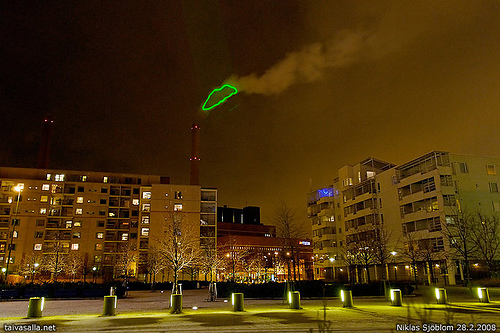 My Skin and The Du Cane and Boehm Family Group. After Gawen Hamilton 1734-2000, by Graham Harwood
My Skin and The Du Cane and Boehm Family Group. After Gawen Hamilton 1734-2000, by Graham Harwood
As I was cleaning out my books and magazines over the holidays, I came across an old issue of Tate magazine from Winter 2000. “William Blake”, the cover exclaims, resonating somehow with a recent column at the Guardian that argues that William Blake was the quintessential British artist, and perhaps the greatest British artist of all time. “Getting Drunk with Gillian Wearing” was another line of text that caught my eye, and then I noticed “The net value of virtual art”, and decided I had to stop sorting and cleaning and open up the magazine.
The article, entitled “Art dot com”, written by Paul Quinn, takes up a healthy six pages, and starts out at the Whitney Biennial. Quinn comments on the presence of “the internet” at the Biennial, “that most private of public spaces” (well, this was years before Facebook’s Mark Zuckerberg declared privacy was so, well, 2000). He observes a teenager navigating the websites on view at the Biennial with “yawning dexterity” and repeats the oft-repeated tale that the teenager exclaimed “”Can we, like, go? We can do this at home”” after a few minutes of weaving through the sites on offer.
Quinn observes that “sometimes the technology cuts the gallery out of the equation”, a statement that might seem quaint today, ten years later. After describing works such as Mark Amerika’s Grammatron and Darcey Steinke’s blindspot and their reliance upon tried and true narrative, he moves on to one of my favourite new media works, John F. Simon Jr’s Every Icon, a masterwork that I believe has stood the test of time and that Quinn felt leaves viewers “contemplating the infinite”. He notes in his conclusion that it’s “hardly surprising, then, that much existing internet art becomes a commentary on existing genres – narrative, painting, minimalism – and that, as so often with innovation, the novelty is in the combination or recontextualising.” Noting that some while some will find “losses” others will find the notion of technological intervention in art a “democratising, demystifying” force, the article takes a halfway-house stance common at the time, as the jury was simply out on what impact the internet and the world wide web would eventually have.
In one of the many “best of” lists that circulated as 2009 dissolved into 2010, the Telegraph listed the opening of Tate Modern in 2000 as one of the “top 100 defining cultural moments of the decade“. Today Tate Modern is viewed, by nearly every metric, as an outstanding success, with a massive presence and significance. Tate Modern itself was a significant part of Graham Harwood’s Uncomfortable Proximity, another masterwork of early internet art that was mentioned in Quinn’s article, and that Michael Alstad and I curated into one of our early online exhibitions, Pixel Plunder©.
Uncomfortable Proximity provided alternative websites to Tate’s own, remixing and subverting artworks in the collection (as seen in the image above) and providing new texts, uncovering elements in Tate’s history that, as Quinn put it, Tate would “erase from its official PR”. The text written by Harwood on his version of the Tate Modern site states:
“Tate Modern is Britain’s new national museum of modern art. As class compositions change, each new economic force takes over the mantle of British taste. Each succeeding social elite must have its art, its brand around which secret codes and systems of value can be exchanged. This is usually in the form of what is to be tolerated and what is not, what’s in and what’s out, who’s in and who’s out. New money needs to be part of history. With money you can buy your way into art history. With even more money you can shape the future of that history.”
Ten years later the novelty that Quinn found in internet art has long worn off, and this quote from Graham Harwood underscores that even then, some weren’t at all distracted from the real forces that will always shape the world at large, including the art world – namely, money. Matthew Fuller wrote an essay we commissioned for the Pixel Plunder© online exhibition and stated: “Is talent important in net art? This group of works gives us the answer. Let us remember that the name Talent was that of an ancient coin. What is a coin but a condensed power to take something out. The possibility to move a thing, an action, a power, from one state into another, to magnify, to set in motion, to store up or to kill. To set something aside, to make it separate.” As I look forward to the next ten years of technological innovation coupled with the production of culture, I will continue to bear in mind that though root agendas continue to be developed elsewhere and dictate the terms, and did so even in the crucible of the “democratising, demystifying” force of ten years ago, there is always room to develop something unexpected, beautiful, surprising, and even effective.


